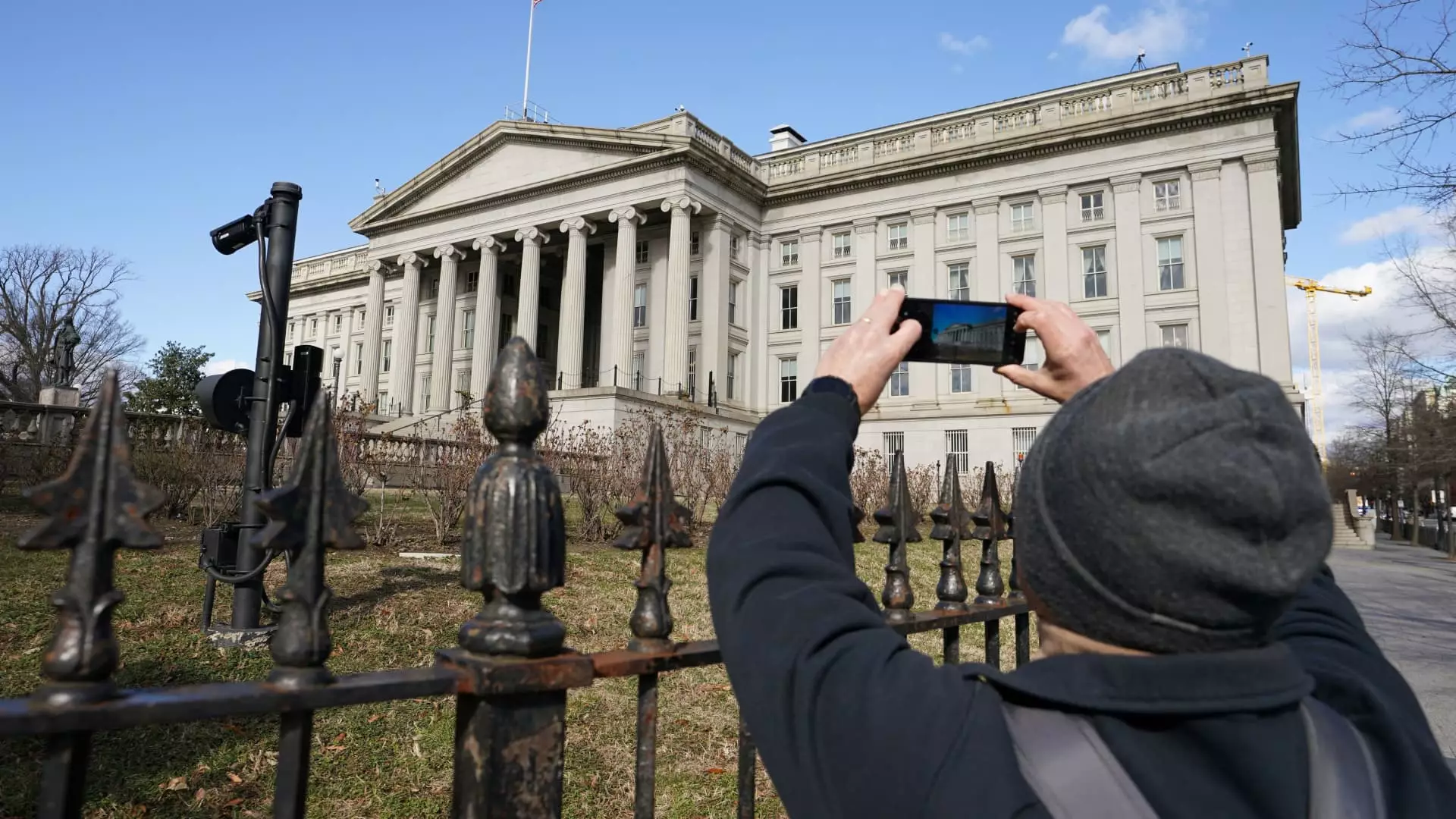In an unpredictable economic landscape, where confidence fluctuates like the stock market, investors are increasingly turning their attention towards the short-term bond market. The undercurrents of financial turbulence have produced a unique moment in investment strategy, especially amidst the latest trends in bond yields and prices. Short-term bonds are no longer the overlooked corner of fixed income; they are now shining brightly as bastions of safety and stability. Joanna Gallegos, the astute CEO of BondBloxx, stated in a recent CNBC segment that while market volatility remains pervasive, fixed-income investors would do best to stick with shorter maturities. This sentiment reverberates through current investor actions, indicating a collective retreat from long-duration securities that rarely proves beneficial in turbulent times.
Yield Dynamics: The Allure of Short-Term Treasuries
The yields being offered by short-term Treasury bills are striking and, frankly, compelling. A three-month T-bill now commands an annualized return exceeding 4.3%, while the two-year yields hover at around 3.9%, and surprisingly, even the ten-year offerings about 4.4% appear more attractive than many alternatives. This yield landscape is not just a fleeting occurrence; it has drawn a flood of investor interest, underscoring a critical pivot in the bond market narrative. The iShares 0-3 Month Treasury Bond ETF (SGOV) and the SPDR Bloomberg 1-3 T-Bill ETF (BIL) have seen unprecedented inflows, with the former even surpassing the investments drawn in by the Vanguard S&P 500 ETF (VOO) this year. Such a definitive migration suggests that risk-averse investors are increasingly prioritizing yield certainty over the potentially tempestuous waters of long-term securities.
The Warren Buffett Factor: A Sign of Caution
It is a telling sign when iconic investors like Warren Buffett double down on short-term Treasuries. With Berkshire Hathaway now commanding a 5% stake in all short-term Treasuries, it sends a strong message to the market: caution is warranted. This strategic pivot towards secure, liquid assets suggests a broader recognition of macroeconomic pressures that could destabilize the long-term bond market. As examined by Todd Sohn, Southeast Securities’ senior strategist, the current volatility surrounding longer-dated securities is almost unparalleled—something that recalls the uncertainty of the 2008 financial crisis. This correlation ought to prompt investors to consider whether their portfolios are adequately prepared for the tumultuous winds blowing through the financial markets.
The Broader Economic Landscape
Broader economic indicators are also ringing alarm bells. A wave of government spending, paired with substantial deficit levels and impending tax reforms, underscores a precarious fiscal situation. With inflation concerns simmering under the surface and the Federal Reserve halting its rate cuts, the backdrop for long-term investments appears increasingly hostile. So why, in such a climate, would an investor choose the long-duration bond route when short-term bonds guarantee safety and immediate returns? In a functioning market, logic dictates that more investors should adopt this argument, yet many seem fixated on the double-digit returns of equity markets, particularly in tech-dominated indices. Gallegos accurately cautions against the equity addiction that grips many investors today, hinting that a balanced portfolio requiring significant fixed-income diversification is essential—yet rarely achieved.
Diversification and Global Opportunities
Amid this bond market tumult, it’s vital to understand that investment opportunities extend beyond U.S. borders. The prospects found in international equities are reviving themes that have lain dormant for years. As Todd Sohn points out, investors would do well to explore these global avenues; Japanese and European equities are orchestrating remarkable performances that eclipse much of the domestic market’s volatility. Investors have access to vehicles like the iShares MSCI Eurozone ETF (EZU) and the iShares MSCI Japan ETF (EWJ), both showing solid gains amid an otherwise shaky market landscape. It’s an unmissable moment for investors willing to look beyond the confines of U.S. large-cap growth.
The evolving investment landscape distinctly highlights a shift towards security and careful diversification, where short-term bonds are catapulted into the limelight while long-duration assets are relegated to the shadows of uncertainty. The time for investors to rethink their strategies is now, lest they find themselves ill-prepared for what could come next.


Leave a Reply